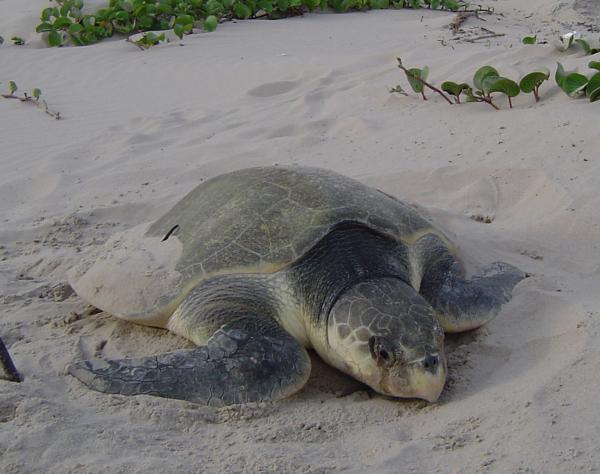5% of profits support Endangered & Threatened Species.
The Kemp’s Ridley Sea Turtle is the most endangered of all sea turtle species.

© Juliet Whitsett |Social: @juliet_whitsett_art
COLOR PALETTE SAMPLED FROM IMAGES OF THE KEMP'S RIDLEY SEA TURTLE:

______________________________________________
SPECIES INFO:
"Kemp’s ridley is the smallest and most critically endangered sea turtle species in the world and the state sea turtle of Texas. Since the 1970s, biologists from the U.S. and Mexico have worked to recover this species decimated by human activities. While Kemp’s ridleys nest mostly in Tamaulipas, Mexico, recovery efforts are forming a secondary nesting colony at Padre Island National Seashore to guard against extinction. Adult females have fidelity to their Gulf of Mexico migratory corridors, foraging areas, and nesting beaches, where they return every 1- 4 years to lay 1- 4 clutches of 100 eggs (primarily during the day!). To ensure species survival, bi-national recovery efforts must continue."
- Donna Shaver, PhD, Sea Turtle Research and Conservation Biologist
__________________________
- It’s the smallest of all sea turtle species- but that still means it can weigh up to 100 lbs. (Kemp’s ridley turtles are 24 to 27 inches (61 to 67 cm) long and weigh 100 pounds)
- Kemp’s Ridleys are the only sea turtles nesting primarily during the day. This may be a strategy to make it harder for nocturnal predators like raccoons to follow their tracks or scent and find their eggs.
- In Texas, Kemp’s Ridley sea turtles occur in nearshore Gulf of Mexico waters, bays, and passes, where they feed mostly on crabs, and occasionally fish, sea jellies, and mollusks.
- THREATS INCLUDE: Bycatch in fishing gear, Climate change, Direct harvest of turtles and eggs, Loss and degradation of nesting habitat, Ocean pollution/marine debris, Predation of eggs and hatchlings, Vessel strikes
- The Kemp's Ridley turtle has a triangular-shaped head with a slightly hooked beak.
- Hatchlings are darkly colored on both sides.
- Adults are generally a grayish-green color on top with a pale, yellowish bottom shell. The top shell (carapace) is often as wide as it is long. Each of the front flippers has one claw while the back flippers may have one or two.
- The gender of each baby turtle is determined by the temperature at which the egg incubates, with warmer temperatures creating females and cooler temperatures creating males (National Marine Fisheries Service et al. 2011, LeBlanc et al. 2012). Despite incubating together, the eggs from one nest do not usually produce hatchlings that are all the same gender. In a typical nest, eggs in the center of the clutch are warmer than eggs at the outside edge due to metabolic heat created by the surrounding eggs. Hatchlings from eggs in the center are more likely to be females, and hatchlings from eggs on the outer edges are more likely to be males (LeBlanc et al. 2012).
IMAGE:

https://www.seeturtles.org/kemps-ridley-turtles
RANGE:
"Most Kemp’s Ridley nests are found in Mexico however, south Texas is at the northern end of the Kemp’s ridley documented historic nesting range. More nests are found at Padre Island National Seashore than any other location in the United States." (Shaver and Caillouet 2015).
WATCH:
Dr. Donna Shaver
SUPPORT:
Shop this art HERE .
OR gift to theThreatened Texas Series: Venmo @Juliet-Whitsett (Your patronage donation helps spread the word about Texas' Endangered & Threatened Species)
The major recovery actions for Kemp's Ridley turtles include: Protecting sea turtles on nesting beaches and in marine environments. Protecting nesting and foraging habitats. Reducing bycatch in commercial, artisanal, and recreational fisheries.
THREATENED TEXAS SERIES:
There are 148 Threatened Species in Texas and ~74 Endangered Species. Each palette & species is unique. I have sampled colors from images of actual Texas Threatened Species and created original art inspired by each group.
5% of the profits from this series enthusiastically goes to help Threatened & Endangered Species.
SOURCES:
https://commons.wikimedia.org/w/index.php?curid=83579247

